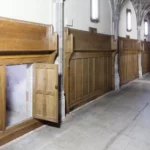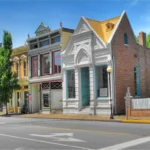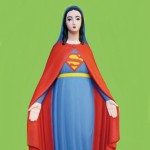
Once upon a time in ye olde England, it was illegal to be Catholic. In case you need a quick refresher: King Henry VIII needed a male heir to the. He blamed Catherine of Aragon (his brother’s widow and the first of his six wives) for not bearing him a son. On these grounds, he asked the Pope for an annulment, which was refused, so Henry founded his own church (the Church of England). And because he was King, aka God’s own emissary on earth, the entire country was required to convert to his new religion. Over the next few generations, the United Kingdom yo-yoed between Catholicism and the Protestant faith as new inheritors of the crown prosecuted those who refused to convert their preferred religion. Queen Mary, aka “Bloody Mary” terrorised the nation, burning Protestants at the stake for not converting back to Catholicism. And during the Protestant Reformation of the 16th century, Queen Elizabeth I determined that it was High Treason for a Catholic priest to even enter England, so she established an order of priest-hunters, also known as “pursuivants.” In response, the Jesuit order of priests was founded in 1540 to support Catholic families and dispersed to wealthy families under the guise of being uncles or teachers. They would meet at safe houses. And these safe houses were characterised by a peculiar secret feature: Priest Holes.

Priest Holes are pretty much what they sound like: tiny, tucked-away medieval panic rooms where Catholic families could hide their priests. The hiding holes were always very small. They had to be – the pursuivants were on missions to smoke out heretics. They were no taller than four feet, wedged in any space the house could discreetly accommodate, and they were installed specifically for this purpose.
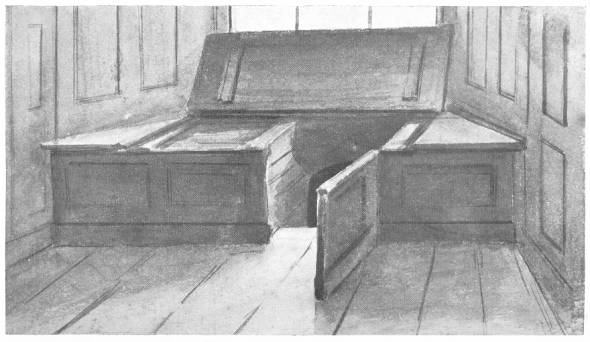
When priest hunters became wise to these hidden spaces, they would lie in wait until the families thought they had gone, and then seize the priest when he emerged. Sometimes the pursuivants would even pace out the walls to make sure they measured accurately. They tapped on walls to check for hollow sounds. They tore up floorboards. They checked blueprints.
Some homes, like the Scotney Castle, had multiple Priest Holes (you can find a list of National Trust estates open to the public where priest holes were found here). At another manor house in Warwickshire, numerous hideaways were found: one in the roof space above a bedroom closet, one on the other side of the Great Parlour’s fire place one and one even hidden through the toilet shaft. Of course, no matter how sound the Priest Hole itself, if the priests were forced into hiding for days, they could suffocate or starve to death.


Nicholas Owen was a carpenter and a Jesuit lay brother, who specialised in building Priest Holes to evade prosecution. Owen himself was small of stature and he went by the nickname “Little John.” He worked alone and at night to avoid suspicion. Harvington Hall alone has seven Priest Holes, all constructed by Owen.
Some of Owen’s secret alcoves were actually hidden within other alcoves – the first one easily detectable from the outside to trick the pursuivants. Some of his work throughout England may still be undiscovered. For example, the Priest Hole pictured below was rediscovered in 1858, but it was not fully opened until 1910, and “still inside were a rope ladder, a small tapestry, bedding and a folding leather altar.”

Nicholas Owen did eventually get caught. The first time he was discovered, in 1594, he was tortured extensively, but did not reveal the names or locations of his fellow Catholics. He and Father John Gerard were captured together. Owen “was released after a wealthy Catholic family paid a fine on his behalf, the jailers believing that he was merely the insignificant friend of some priests.” Upon his release, he went back to work constructing the Priest Holes, again and masterminded Father John Gerard’s escape from the Tower of London.
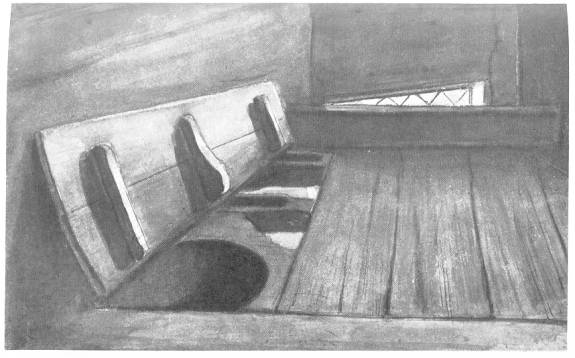
In 1606, though, Owen was arrested again. “Closely pursued by government officials, he and three other Jesuits successfully avoided detection for eight days…concealed in the two small cramped spaces in which they could neither stand upright nor stretch their legs, they received nourishment through small drinking straws hidden in the building’s own structure”.

He was tortured so badly this time and died an awful death, having revealed nothing to his inquisitors. He is one of the 40 Martyrs of England and Wales and for his years of service constructing the tromp l’oueil of the Priest’s Holes, he became Saint Nicholas Owen, the Patron Saint of Illusionists and Escapologists. His hideaways remain in some of the most iconic historical homes as tattoos of a horrific past.
Just another reason to double check your attic.
Written by Mary Kay McBrayer


